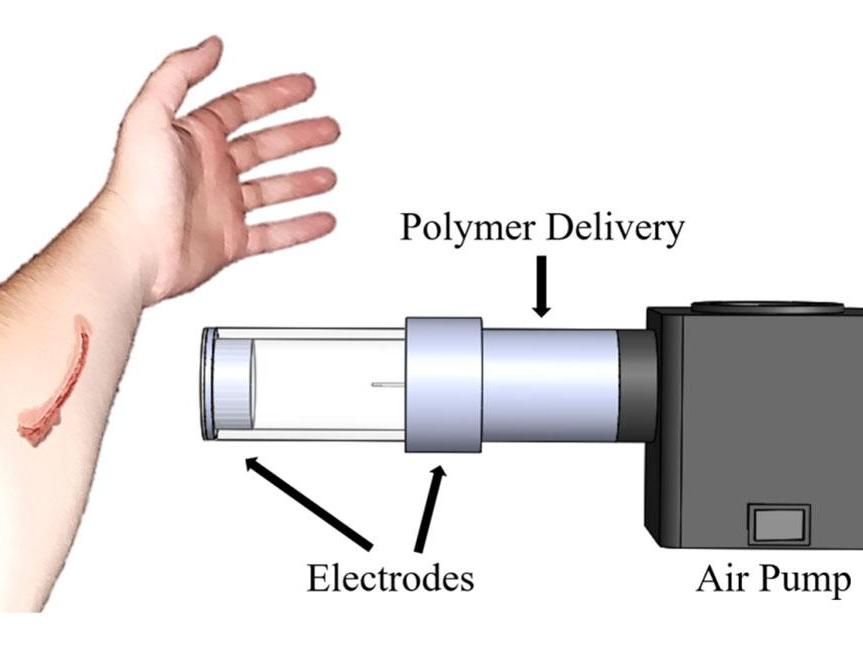Scientists create spray-on bandages that could save lives in remote areas
Drugs could be delivered by spraying fibres directly onto the skin, study says

Spray-on bandages could help protect wounds and deliver life-saving drugs in far-flung places where immediate medical care is not available, according to a new study.
Using a technique called electrospinning, scientists created “bottled bandages” which spray a thin layer of fibres onto damaged skin like spraying paint on a wall.
“It is the first demonstration of depositing the drug-delivering fibres directly onto a wound site safely,” said Lane Huston, author of the study published in the Journal of Vacuum Science & Technology B.
The graduate researcher at Montana Technology University added: “By applying this spray paint-like mechanism, this device can be used to cover wounds and provide controlled drug release over time.”
Electrospinning is used in other industries to wrap, filter and insulate various commercial products.
However, it has previously used electricity at very high voltages that could be dangerous to human skin.
But now scientists have developed an electrospinning device with a smaller electric field that could safely deposit bandages onto skin, the study states.
Instead of using the voltage difference between the tool and a surface to deposit the fibres, the new device uses air to spray fibres onto the surface.
Mr Huston said: “In spray painting, pressurised gas forces direct particles towards a surface, creating a sort of deposited material. Like spray painting, the device is used by directing its nozzle at the desired surface during operation, causing a fibre mat to be deposited onto that surface.”
The research team are the first to successfully test their device on pigs and a “gloved human hand”.
The global tapes and bandages market is worth around $5.5bn (£4.3bn) and is expected to grow over the next five years.
Scientists hope the technology will help doctors and medical personnel working in rural areas.
“The bandage material, as well as the drug used, can be chosen on demand as the situation warrants, making modular and adaptable drug delivery accessible in remote locations,” Mr Huston said.
Join our commenting forum
Join thought-provoking conversations, follow other Independent readers and see their replies
0Comments